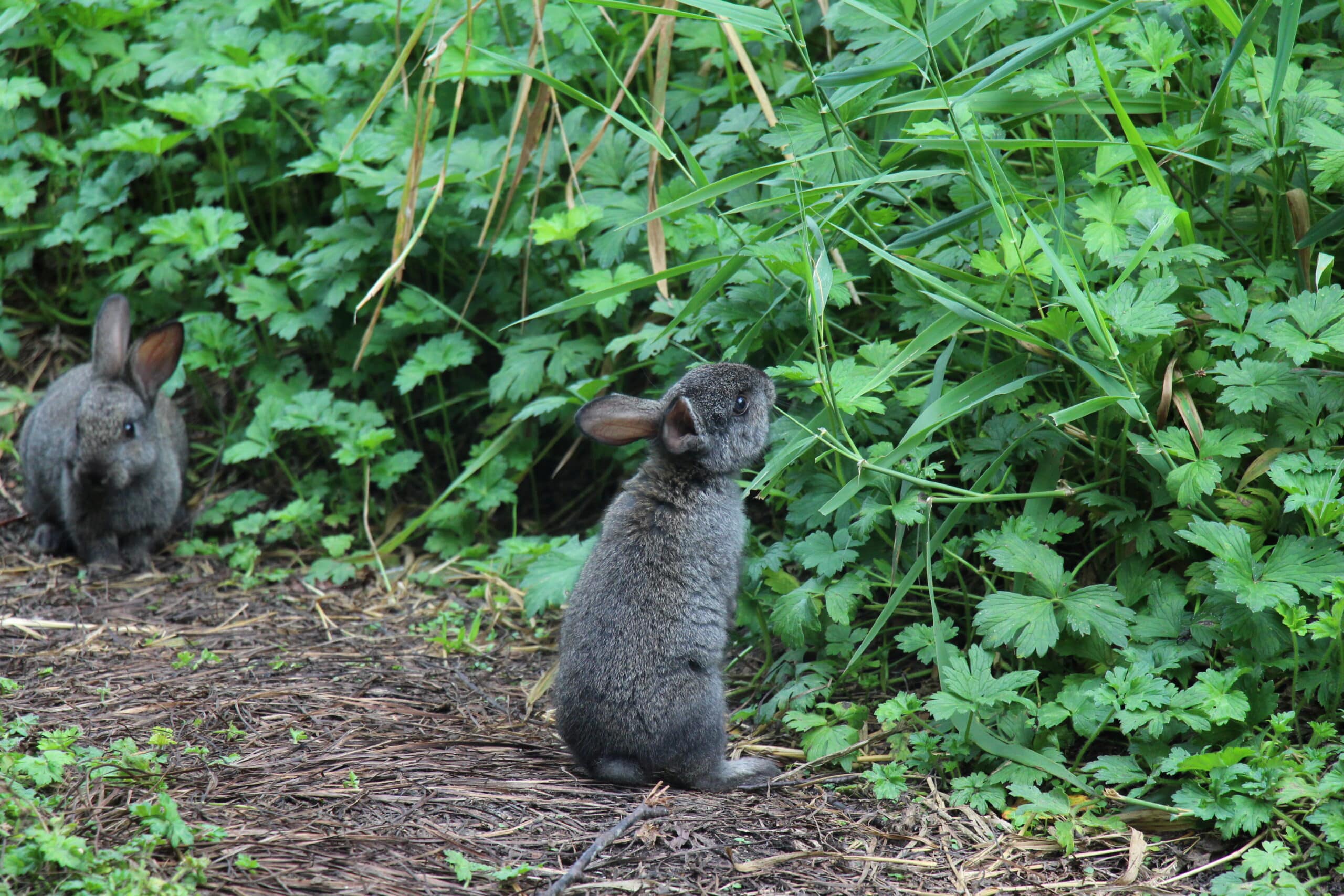By Lisa Houle | March 28, 2024
There is no denying bunnies are cute. With spring and Easter in the spotlight, these little bundles of energy with their floppy ears and twitching noses may seem like the perfect addition to the family. But did you know some pet bunnies can live up to 12 years in your care?
Owning any pet means housing, feeding, and caring for their every need. If a situation changes and a pet needs to be rehomed, that’s understandable. But releasing them into the wild is not. There’s always a better option! This Easter, ISCBC is urging you to play your part: Don’t Let it Loose!
B.C. has several species of native rabbits, and two species of rabbits considered invasive: the European rabbit (Oryctolagus cuniculus) and Eastern cottontail rabbit (Sylvilagus floridanus). The European rabbit was originally brought to B.C. by settlers. Eastern cottontail rabbits were introduced into B.C. in the 1960s.
“Invasive rabbits can have significant ecological and economic impacts. They can eat a lot of vegetation in early spring. The loss of vegetation increases soil erosion, impacts native wildlife, and opens up space for invasive plants,” said Nick Wong, ISCBC Manager of Science and Research. “Also, when building warrens (their homes) they may bury nutrient-rich topsoil which can alter water absorption, runoff, retention, and evaporation rates.“

A higher density of rabbits equals more digging, more eating, and more damage to property, agriculture areas, and the natural environment.
“Invasive rabbits eat a range of vegetation including B.C.’s native shrubs and trees, preventing healthy regeneration. Eastern cottontails are considered a serious threat to Garry Oak habitats on Vancouver Island – the lone location in Canada for Garry Oak, and one of our country’s most endangered ecosystems. They are also known to feed on several at-risk plant species,” said Nick. “Invasive rabbits can also impact agriculture yields by eating crops and competing with livestock for food. Warrens can also create tripping hazards which are a safety risk when established in common play areas and green spaces.”
Knowing that releasing a pet to the wild is not the right choice, consider your options.
“Reach out to the place where you purchased your pet to see if they can take the animal back. If they can’t, consider finding the animal a new home with friends, family members or other people in your social circle,” said Craig Stephani, ISCBC’s Senior Lead of Special Projects and Don’t Let it Loose Coordinator.
“Another rehoming location could be with local science centres, zoos or aquariums. These places may be able to use the animal to help educate their guests. And if all else fails, speak with a qualified veterinarian to see what other options are available. This is a last resort, but it is far kinder than letting the animal starve in the wild or destroy the homes of native animals and plants.”
A pet bunny can be a great addition to the family. Just ensure you are prepared for its lifetime responsibility of care and whatever you do, Don’t Let it Loose!
Lisa is a Communications and Outreach Coordinator at ISCBC. She values a diverse environment and connecting with others about environmental protection. In her spare time Lisa enjoys spending time at the ocean and beach combing for sea glass. You can reach Lisa at lhoule@bcinvasives.ca
Share


















